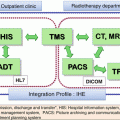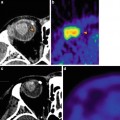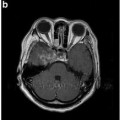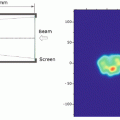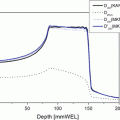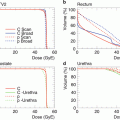Fig. 6.1
Bird’s-eye view of the HIMAC
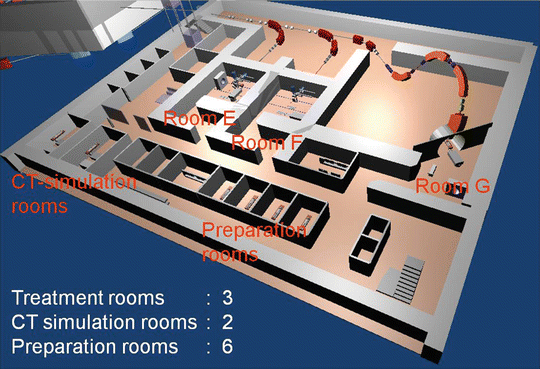
Fig. 6.2
Layout of the treatment floor in the new facility
One important feature of the carbon-ion radiotherapy is an absence of the rotating gantry. The treatment room has a fixed horizontal and vertical irradiation ports. The port layouts of the HIMAC are the following:
Room A: Vertical port
Room B: Horizontal and vertical ports
Room C: Horizontal port
The construction cost of the irradiation ports and the beam line can be reduced by the nonidentical irradiation port layout. But the patients are treated in the different rooms day by day. The capable scheduling system is necessary to make best use of the nonidentical rooms.
Recently, the rotating gantry for carbon-ion radiotherapy has been developed in Heidelberg University (HIT) and NIRS. The world’s first carbon-ion gantry was designed and constructed at HIT (total weight of over 600 t). The clinical operation of the gantry was started in 2012. A lightweight rotating gantry using superconducting magnets (~3T) has been constructed at the new treatment facility (room G) in NIRS (see Fig. 6.3). The adoption of the gantry will be an important point for the future carbon-ion radiotherapy facility.


Fig. 6.3
Bird’s-eye view of the rotating gantry for carbon-ion radiotherapy using superconducting magnets at HIMAC
The carbon-ion radiotherapy system supports the workflow not only accurately but also efficiently. It consists of a radiotherapy treatment planning system (RTPS), a patient handling system (PTH), a beam delivery system (BDS), a quality assurance (QA) system, and an oncology information system (OIS) in Fig. 6.4




Stay updated, free articles. Join our Telegram channel

Full access? Get Clinical Tree


